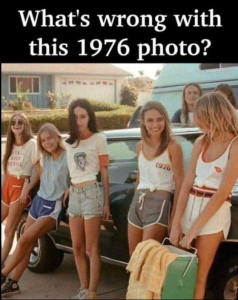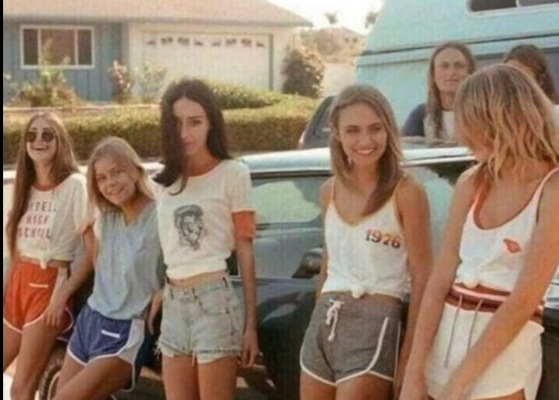How Friendships Have Changed: BFFs in the ’70s vs. Today
Friendship has always been one of the most meaningful connections humans share — a bond that shapes our memories, comforts us through hard times, and gives life its laughter and joy. But while the heart of friendship hasn’t changed, the way people build, maintain, and experience these relationships has transformed dramatically over the decades. To understand how much, let’s take a look back at what being “best friends forever” meant in the 1970s compared to today’s hyper-connected, fast-paced world.
Friendship in the 1970s: Slow, Deep, and Personal
In the 1970s, friendship was an experience rooted in presence. There were no cell phones, no social media, and no instant messaging — if you wanted to talk to your friend, you picked up a landline (often shared with the whole family) or showed up at their front door. Plans were made face-to-face or by scribbling notes passed in class. When you spent time together, you were really there — no digital distractions, no scrolling, no multitasking.
Many lifelong friendships of that era were built on shared routines and local communities. You knew your best friend’s family, their siblings, and even their dog. Kids roamed their neighborhoods on bikes, knocked on each other’s doors, and spent hours outside together, inventing games or lying in the grass talking about dreams and crushes.
For adults, friendship often revolved around community spaces — coffee shops, churches, schools, or workplace gatherings. Women had close-knit circles for support, while men bonded over sports, cars, or weekend barbecues. There was an unspoken rule that if a friend needed you, you showed up.
Letters played a special role too. People moving to new towns or going off to college kept their friendships alive by writing long, heartfelt letters — pages filled with updates, doodles, and love. Waiting for a reply could take weeks, but the anticipation made each envelope precious.
The word loyalty defined ’70s friendships. Disagreements were solved in person, secrets were kept, and people valued sticking together through the ups and downs. Friendship was less about convenience and more about commitment.
Friendship Today: Fast, Global, and Digital
Fast forward to today, and friendship has taken on a completely new shape. Technology has changed how we meet, talk, and even define what “friend” means. Now, someone can have 2,000 “friends” on Facebook and still feel lonely, or connect with someone on the other side of the world and feel closer than with people they see every day.
The biggest difference? Access. With smartphones, video calls, and social media, friends can stay in touch 24/7. You can share your thoughts instantly through a text or post a photo that sparks conversations across continents. Long-distance friendships no longer fade easily — they’re sustained through DMs, memes, and FaceTime.
But this constant connectivity comes with trade-offs. Relationships today are faster, more fragmented, and sometimes less intimate. Online interaction often replaces real-life connection. Instead of sitting across from each other in a diner talking for hours, many friends “catch up” through quick texts or Instagram stories.
There’s also more visibility in modern friendships — we see our friends’ lives unfold in real time through curated photos and updates. While this helps us stay informed, it can also lead to comparison, jealousy, or the illusion that others are living “better” lives. In the ’70s, you didn’t know every detail of your friend’s weekend — today, you might see it all on social media before they even tell you.
Still, the digital age has its blessings. It has made friendships more inclusive and far-reaching. People can find communities that share their passions, values, or struggles — something that wasn’t always possible decades ago. Friendships are now formed in online gaming communities, group chats, fandoms, or creative spaces that transcend geography and social barriers.
Then vs. Now: What’s Been Gained and Lost
Comparing the two eras highlights a fascinating balance between depth and convenience.
In the 1970s, friendships often ran deep because maintaining them required effort. People made time for each other, and every interaction felt intentional. There was a sense of trust that came from shared physical presence — you couldn’t ghost someone or send a heart emoji instead of an apology.
Today, friendships are more flexible and dynamic. Technology allows for constant connection, but sometimes at the cost of quality. We might have more contacts, but fewer confidants. The emotional labor that used to go into one or two close friendships has now spread across dozens of digital interactions.
That said, today’s generation has gained a new kind of resilience and openness. Conversations about mental health, boundaries, and personal growth are far more common among friends than they were in the ’70s. Back then, vulnerability was often hidden; now, emotional honesty is seen as a sign of strength.
Also, modern friendships are less defined by gender, race, or location. While social circles in the 1970s were often limited to local communities and cultural norms, today’s friendships can cross every imaginable boundary. You can have a best friend in another country, or a close bond with someone you’ve never met in person but talk to daily online.
The Role of Nostalgia and the Return to Authenticity
Interestingly, as technology has advanced, many people are now longing for the kind of authenticity that defined friendships in the past. There’s a growing cultural movement toward “digital detoxes,” letter writing, and in-person meetups — an effort to bring back the slow, genuine connections that older generations cherished.
Friendship today is evolving toward a hybrid model: using technology to stay connected but valuing real-world presence whenever possible. Brunches, road trips, or movie nights are being reclaimed as sacred time — moments to unplug and be fully present, just like friends in the ’70s once were by default.
The Universal Thread: The Human Need to Belong
Despite all the changes in how friendships look and feel, one thing remains constant — the deep human need to belong. Whether it’s two girls in bell-bottoms whispering secrets on a rotary phone in 1976, or two friends laughing over a video call in 2025, the essence of friendship hasn’t changed: love, loyalty, understanding, and the feeling that someone truly gets you.
Friendship adapts to its time. In the ’70s, it thrived through physical presence and patience; today, it thrives through accessibility and expression. The tools may differ, but the emotion is timeless.
In the End
If friendships in the 1970s were like handwritten letters — thoughtful, slow, and lasting — then friendships today are like text messages: immediate, flexible, and constantly evolving. Both have beauty in their own way.
Maybe the real secret to lasting friendship is finding a balance between the two — bringing the sincerity and loyalty of the past into the fast, digital rhythm of the present. Because whether it’s 1975 or 2025, true friendship will always mean the same thing: someone who stands by you, listens to you, and makes you feel a little less alone in this big, changing world


